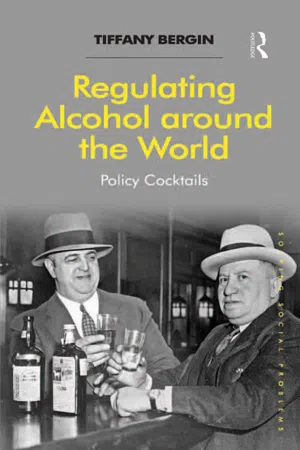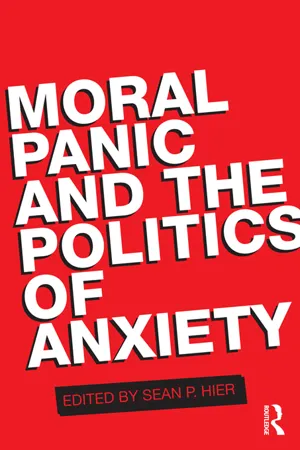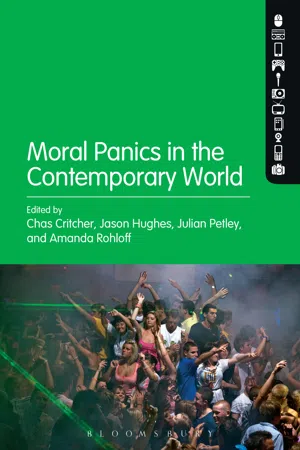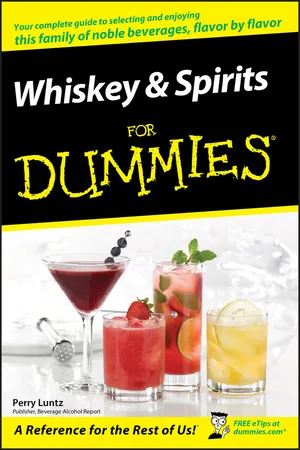History
Gin Craze
The Gin Craze refers to a period in the 18th century in England when the consumption of gin reached epidemic proportions. It was characterized by excessive drinking, public drunkenness, and social problems associated with alcohol abuse. The government responded with various legislative measures to curb the negative effects of gin consumption, ultimately leading to a decline in its popularity.
Written by Perlego with AI-assistance
Related key terms
Related key terms
1 of 4
Related key terms
1 of 3
6 Key excerpts on "Gin Craze"
- eBook - ePub
Regulating Alcohol around the World
Policy Cocktails
- Tiffany Bergin(Author)
- 2016(Publication Date)
- Routledge(Publisher)
These concerns can be shaped by changes in drinking patterns, as well as by cultural attitudes—such as, in this case, attitudes about women’s societal roles—and by political and economic factors. Such concerns can, in turn, be mobilized by reformers to instigate policy change. The Gin Craze is also important because it offers an example of the ways in which historical experiences—or the collective memories and understandings of such experiences—can influence later alcohol policymaking. Perhaps in part because of Hogarth’s memorable works, this historical phenomenon has had a lasting effect on British culture and attitudes to alcohol. Indeed, even a 2010 article published in The Telegraph about the contemporary problem of binge drinking referenced “Hogarth’s Gin Lane” (Humphrys, 2010). As the British Museum’s official description of Hogarth’s print explains: “The horrors of Gin Lane provided imagery for propaganda against alcohol for another hundred years.” The fact that the Gin Craze is still referenced in contemporary debates illustrates the potency of history—or, at least, society’s collective interpretation of such history. Beyond the Gin Craze In addition to the Gin Craze, other historical phenomena have also cast long shadows over British alcohol policymaking. For example, the British temperance movement that gained prominence in the nineteenth century “had a decisive impact on the way alcohol is viewed in Britain,” as it cast alcohol’s negative impacts as important social and political issues (Yeomans, 2009, p. 3.1). Similarly, in the US the Prohibition Era of the early twentieth century has left a lasting legacy. Even today Prohibition’s perceived failures are often cited in debates about restricting alcohol’s availability, as seen in relation to the Oglala Sioux Tribe’s policy of prohibiting alcohol at the Pine Ridge Reservation, discussed in Chapter 1 - eBook - ePub
- SEAN HIER(Author)
- 2012(Publication Date)
- Routledge(Publisher)
2007 : 2). The same writer explicitly compares the Gin Craze and binge drinking as moral panics, seeing similarities in: the definition of crisis (Cohen’s stage 1); the crucial role of pressure groups and the media (stages 2–4); and the expression of generalized anxieties about social change. New laws were also passed to remedy each problem (stage 5). However, Borsay emphasizes that the model cannot account for the massive historical changes between the two episodes, such as attitudes to alcohol and gender, the power of the drinks industry and the pervasiveness of the mass media system.Warner, Birchmore-Timney and Ivis (2001 ) examined whether the press endorsed a moral panic about gin. They analysed the content of ten periodicals for the key periods around the Acts of 1736 and 1751. Most items in the first period (70 percent) were about crimes or prosecutions related to gin; in the second period the same percentage were about the proposed new law. Coverage showed some evidence of moral panic. Peaks of coverage followed campaigners concerns rather than consumption patterns. However, there was little evidence of the kinds of sensationalism and moralizing typical of the modern press. This they attribute to lack of interest in social problems amongst the political elite and the inexperience of a press still reliant upon official news sources. They suggest that during the Gin Craze, even at the height of the moral panic in 1736, the press played a secondary role. It reflected the campaigners’ concerns without endorsing them.Thanks to some recent collations of historical studies, we are now much better able to place the Gin Craze amongst some other emergent types of moral panic, notably about crime. This wider project is to meet ‘the demand for sensitive comparative analysis of moral panics over a relatively long period, using the concept flexibly as a heuristic device to consider changes in the public sphere and news media, particularly their role in governance and legislative outcomes’ (Lemmings 2009b - eBook - ePub
- Daniel Malleck, Daniel Malleck(Authors)
- 2020(Publication Date)
- Routledge(Publisher)
But the tension between Carnival and Lent was a tension between common and divine activity, and although viewed with some concern, it was not something against which authorities normally sought to impose heavy restrictions. The Hogarth drawings, on the other hand, represent the concerns about types of drinking and the excesses of spirits over beer. The community where gin prevailed was degraded and destitute, with only the pawn shop benefitting because people would sell their goods to buy gin. The community where beer prevailed was healthy and orderly; only the pawn shop was destitute. 1 The resulting laws to suppress the gin trade targeted one product, not all forms of consumption. 2 Such regulations themselves demonstrate how profound were the changes in the nineteenth century, because in order to curtail the gin trade the government instituted controls including taxes and licensing, rather than imposing prohibitions and laws condemning individual consumption. More complex than these secular impressions were the debates among religious leaders. Especially, Puritan ministers railed against public drunkenness, linking it to more substantial problems of individual excess and social deterioration. 3 Such proclamations are often seen as the roots of the idea that addiction to drink was a social problem requiring more sophisticated social intervention. One classic work on addiction is by Harry Levine, and set the origins of the medical interpretation of addiction in the writings of Philadelphia physician Benjamin Rush. Levine argued that Rush’s An Inquiry into the Effects of Ardent Spirits upon the Human Body and Mind (reprinted in this collection) was the pivotal document that started the process of medicalizing drunkenness, providing a language upon which subsequent reformers based their concerns - eBook - ePub
- Julian Petley, Chas Critcher, Jason Hughes, Amanda Rohloff(Authors)
- 2013(Publication Date)
- Bloomsbury Academic(Publisher)
Moral panic and moral regulation theories encourage concentration on differing means, anxiety and discourse, through which to explain the emergence of social problems. Which is more suited to studying the ‘drink problem’?Moral panics and social anxiety are clearly relevant to the subject area of drinking. Indeed, these heuristic devices have been employed numerous times since Joseph Gusfield (1962) highlighted the causal importance of status anxiety within the emerging middle class in producing the American temperance movement. More recently, Peter Borsay’s (2007) discussion of the Georgian ‘gin panics’ cited contextual factors, such as rapid urbanization, increasing working-class affluence and concerns about the breakdown of the family, as factors instrumental in producing the social unease which came to be directed at the consumption of spirituous liquor.1 Gin was a relatively new substance, having been introduced to Britain from the Netherlands after the Glorious Revolution, and historians generally accept that its consumption was on the rise in London during the first half of the eighteenth century (Nicholls 2009). But, according to Borsay, it was ‘the capacity to yoke the rise in gin drinking to the wider concerns of society that transformed a potential social problem into a full blown “moral panic”’ (2007) – a panic which saw William Hogarth famously depict the criminal and immoral depravities of ‘Gin Lane’. Nicholls describes how it is common to see the Licensing Act 1751, which raised the licence fee for gin-sellers and restricted the type of premises which could hold a licence, as making the gin trade respectable and thus ending the gin panics (Nicholls 2009: 46–8).2 The ‘gin panics’ thus seem to lend themselves readily to explanation through moral panic theory: social changes created anxiety which became focused on a new substance and a new social group (emerging urban working class); Hogarth and others ‘manned the barricades’ before legal changes restored some sense of equilibrium.But the utility of social anxiety as an explanatory concept is not universal. In his study of the Black Act 1723, E. P. Thompson criticized the idea that this repressive law, which condemned many people to death for relatively minor criminal offences, could be explained simply by the wave of public concern unleashed by social unrest. A widespread perception of crisis may have led to a consensus that something needed to be done, but ‘If we agree that “something” needed to be done this does not entail the conclusion that anything - eBook - ePub
Brain-Robbers
How Alcohol, Cocaine, Nicotine, and Opiates Have Changed Human History
- Frances R. Frankenburg MD(Author)
- 2014(Publication Date)
- Praeger(Publisher)
The wealthy London distillers did not go to jail; nor did the middle-class suppliers. But many poor people did. Most of those convicted of selling gin without a license were women. The decision of poor people to sell gin was not necessarily foolish. Women who sold gin did not have to become prostitutes.Figure 1.8 Hogarth’s Gin Lane. (Wellcome Library, London)Gin sales actually increased. Riots against the government and informers were common. Some informers then devised a new occupation: blackmailing. They visited the gin sellers and took a fee in return for not turning them into the authorities. Informers were then attacked and sometimes killed by mobs.35 The Gin Craze, with its widespread defiance of the law, foreshadowed problems in the future with Prohibition in the United States.The Gin Craze ended, or people stopped writing about it quite so much, by 1860. Did the work of Fielding and Hogarth have anything to do with it? Perhaps. Another possibility is that when grain harvests failed, distillation of grain alcohol to form gin slowed down.But gin continued to be associated with the London lower classes and disreputable habits. Although Charles Dickens, in Sketches by Boz , took artistic pleasure in describing the miseries of the poor, he explained with compassion why gin continued to be drunk by so many nineteenth-century Londoners:Gin-drinking is a great vice in England, but poverty is a greater; and until you can cure it, or persuade a half-famished wretch not to seek relief in the temporary oblivion of his own misery, with the pittance which, divided among his family, would just furnish a morsel of bread for each, gin-shops will increase in number and splendour.36Gin and Tonic
Gin and tonic is the drink of the British colonizers. While gin was associated with the slums of London, the addition of tonic water transformed it into a drink associated with the magnificence of the British Empire. The lower classes drank gin, and the middle and upper classes drank gin and tonic.The background to the story of gin and tonic is disease. As the British explored, conquered, and moved into tropical areas, tropical diseases, especially malaria, impeded their progress. The only cure for many years was quinine, a substance obtained from the bark of cinchona trees. - eBook - ePub
- Perry Luntz(Author)
- 2011(Publication Date)
- For Dummies(Publisher)
To bring the public drunkenness and proletarian debauchery to a halt, Parliament passed the infamous Gin Act of 1736. The legislation, which quintupled the price of gin and limited sale to two gallons at a time, led almost immediately to “gin riots” that grew so violent that the authorities conceded that the law couldn’t be enforced. It was repealed in 1742.Ultimately, this huge loss of market made British brewers very unhappy and led directly to the Beerhouse Act of 1830. This act was a Parliamentary attempt to stem the tide of gin sales and also to protect the beer business. The act allowed people to sell beer without a specific license, thus lowering costs so that brewers could better compete with distillers.Spreading the gin gospel
The invention of the continuous still in 1831 (see Chapter 2 for details) made it possible to produce large amounts of spirits for a growing market. As a result, the modern gin business started making products used for a number of medicinal purposes (Gin and Tonic to help beat malaria in Britain’s tropical commonwealth countries) as well as for simple taste pleasure (the Martini, for example, among other mixed drinks).Much like the end of Prohibition in the United States, the repeal of the Gin Act brought about changes in perception. The spirit was no longer associated with degradation and abusive behavior by the poor working class when it was being consumed as medicine and for pleasure all over the world.
Index pages curate the most relevant extracts from our library of academic textbooks. They’ve been created using an in-house natural language model (NLM), each adding context and meaning to key research topics.
Explore more topic indexes
Explore more topic indexes
1 of 6
Explore more topic indexes
1 of 4





